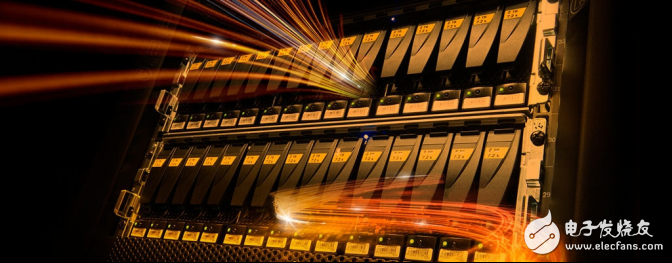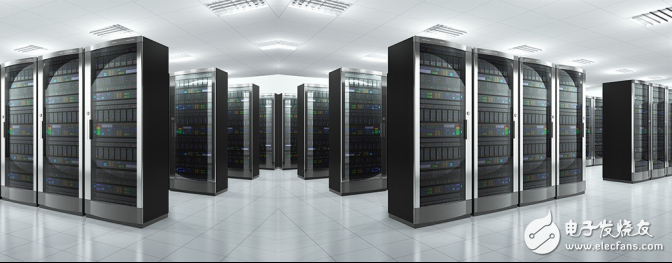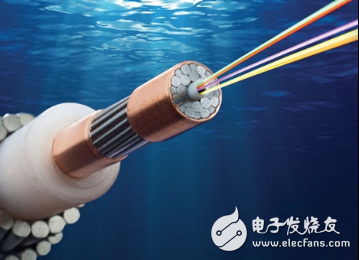In 1837, the telegraph was invented. For the first time, human beings realized “writing to distant partiesâ€; in the middle of the 20th century, the Internet was born, “turning the earth into a big villageâ€; at the beginning of the 21st century, “a mobile phone went to the world, It"; by 2016, China's webcast users jumped to 325 million. Based on the "frightening index" theory put forward by the futurist Kurzweil, we can easily find that with the rapid advancement of data communication technology in the post-information era, the "spiring cycle" of human beings has been shortened. In the past decade, innovations in data communication technology are constantly breaking the so-called speed limits and space constraints on Earth. Today, we can send a video blessing to friends on the other side of the ocean through WeChat, or broadcast a romantic wedding in Sanya, Hainan. These scenes that we take for granted in our view, but also contain the data communication technology in the post-information era, especially the innovation and wisdom of data center and submarine cable continuous iteration, constantly redefining people's lifestyle. First, the role of the data center is in the storage, processing, and transmission of data. Let's make an interesting analogy. Building a data center is like designing a smart city. The key to its success lies in the organic connection of a new generation of information technology and physical components to create a simple, efficient, Reliable data based on the city. A significant trend today is the rise of public cloud services, which means deploying up to 10,000-scale hosts to build a very large data center, compared to the usual data centers of hundreds of servers. The related hardware level is improved and matched to meet the following challenges. The speed of transmission to the data center is like a change in the way the city travels. For data centers, the influx of data traffic has prompted major service providers to continually revisit the upgrade of data transmission speeds in data centers. Xu Suxiang, Senior Manager of Technology Applications, Asia Pacific, Data Concentration and Terminal Equipment Division, TE ConnecTIvity said: "At present, the global broadband development speed is growing at a geometrical level: from 1Gbps to 10Gbps for about 5-10 years, and then to 25Gbps for about 2-3 years. Time, then upgrade from 25Gbps to 100Gbps for about 2 years. The speed of its iterative update is beyond our imagination, which requires electronic components companies like TE to continuously improve our innovation speed and keep up with the pace of the market. We need forward-looking research capabilities and market predictions. I expect the transmission rate to move forward to 400Gbps." The utilization of human settlement space is a major issue that needs to be paid more and more attention as the population continues to rise. Similarly, when designing a living environment for data signals, engineers naturally need to consider how to use space efficiently under the trend of steep traffic. An important measure of the strengths and weaknesses of a data center design is whether it can balance the gap between the spatial density of server growth and the high-performance expansion of the data center. Imagine that if you can configure multiple independent server nodes in a compact chassis, you can not only reduce its space consumption, but also have a flexible storage and sharing infrastructure, which requires a stronger density for each hardware unit. . The use of ultra-large-volume servers and the increase in transmission rate are inevitably accompanied by the doubling of power consumption and heat dissipation requirements. Therefore, power cable configuration, green energy conservation and power risk management have become an important issue in data center operations to help data signals create a safe, harmonious and convenient green and livable “cityâ€. TE's latest microQSFP is recognized as a new standard in data center and wireless communications applications. One of the major factors is that the product is 30% more efficient than the traditional standard QSFP28, while still guaranteeing a The traditional 10G input/output interface size range provides 100G transmission speed. Compared with other countries such as Europe and the United States, due to China's large population, in densely populated areas, the gap between demand for service resources during peak hours and general time will be very large. One of the most obvious examples is the annual “Double Eleven†shopping carnival, where hundreds of millions of buyers are eager to click on “confirm†bids. Through the technology of cloud computing, realizing the concentration and sharing of resources, meeting the large traffic demand in special time periods, and supplementing the resources of idle time to other required applications will be a very beneficial change, which is more suitable for China's national conditions. In addition, Because the data center occupies a large area, it is often built in an area with complicated terrain and harsh environment. This requires more hardware equipment to withstand various challenges and maintain efficient, safe and reliable operation. In addition to the data center, to achieve international communication across continents and across the ocean, it is also inseparable from the "data highway" - the assistance of submarine cable. In fact, 99.6% of the world's international communications are done through submarine cables. The diameter of a submarine cable with a diameter of only an adult thumb can exceed 35,000 kilometers, and can transmit 100 terabits or more per second. Long-distance submarine communications was an impossible task a few years ago, and now the program is already in progress. "Technically, there are several key technology breakthroughs: the first is fiber loss, from the previous 0.2-0.18dB / km (decibel / km) to the current 0.15dB / km, the reduction of light loss makes the transmission distance The second is the transmission mode, which can transmit longer distances without interruption. The third is the fiber material. The previous fiber may only reach 80mbps (megabits per second), and now it can achieve 150mbps with very large fiber, which is equivalent to The lanes of the expressway have widened, and the traffic volume that can be used has become larger.†Dr. Zhong Qian, General Manager of Asia Pacific Sales, Undersea Communications Division, TE ConnecTIvity, said. Future data communications will enable faster transfer rates, more powerful data exchange networks, and more seamless real-time communications, turning the seemingly whimsical scene into a real-world application. In fact, the future is not far from us. At this year's World Mobile Communications Conference (MWC), more than 20 influential companies in the industry announced that 5G new radio technology will be deployed on a large scale in 2019. This means that after two years, the average consumer will get a faster data transfer experience, one year earlier than previously expected. "5G will bring high-speed, low-latency, high-capacity advantages, detonating a series of terminal and industry changes, subverting people's life scenarios, such as mobile applications, virtual reality, autonomous driving, remote surgery, etc." Vice President of TE ConnecTIvity Jason Merszei, General Manager of the Asia and Europe Region of the Data and Terminals Division, and Chairman of the Joint Committee of the TE China Business Unit, said at the 2017 MWC site, “In short, future data communications, everything is possible, and these pioneering physics The foundation is the backbone of the data from our connected world."
Power 12W ,output voltage 3-12V, output current Max 1A, 6 dc tips. We can meet your specific requirement of the products, like label design. The material of this product is PC+ABS. All condition of our product is 100% brand new.
Our products built with input/output overvoltage protection, input/output overcurrent protection, over temperature protection, over power protection and short circuit protection. You can send more details of this product, so that we can offer best service to you!
12W Wall Adapter, 12W Wall Power Supply,12W Power Cord In Wall, 12W Wall Power Adapter Shenzhen Waweis Technology Co., Ltd. , https://www.waweis.com

